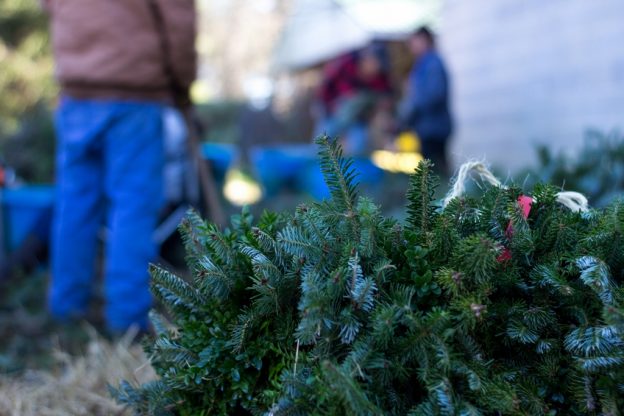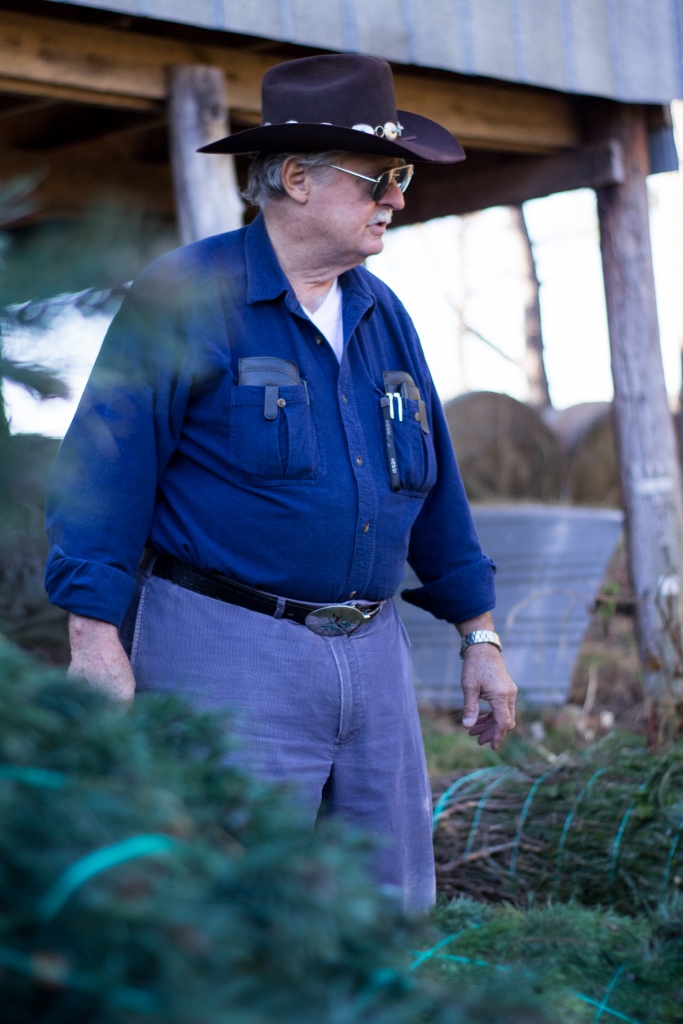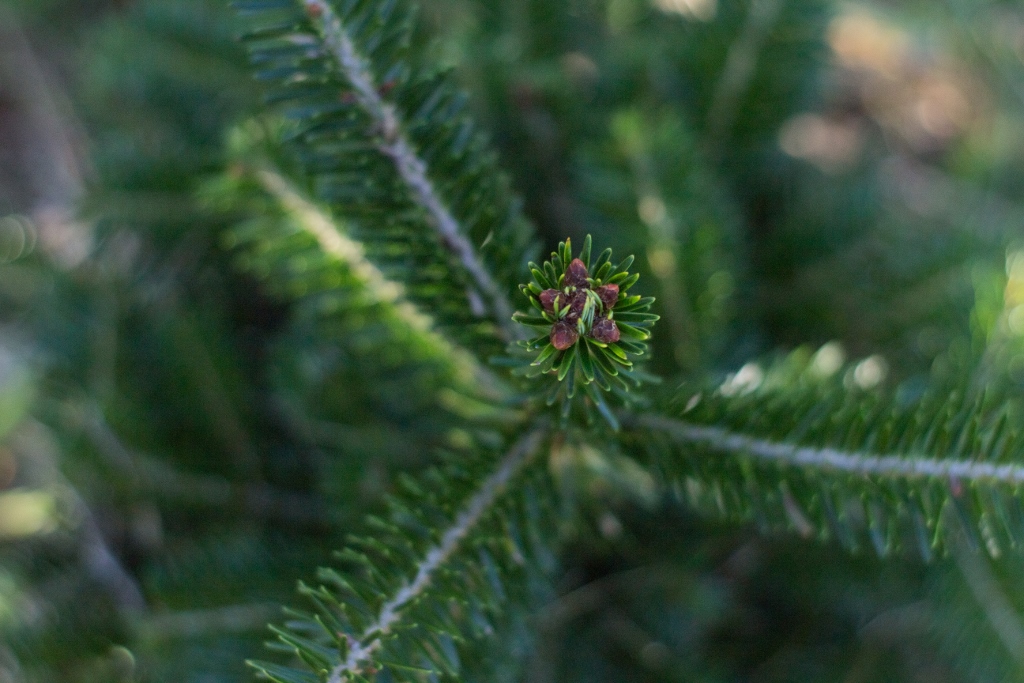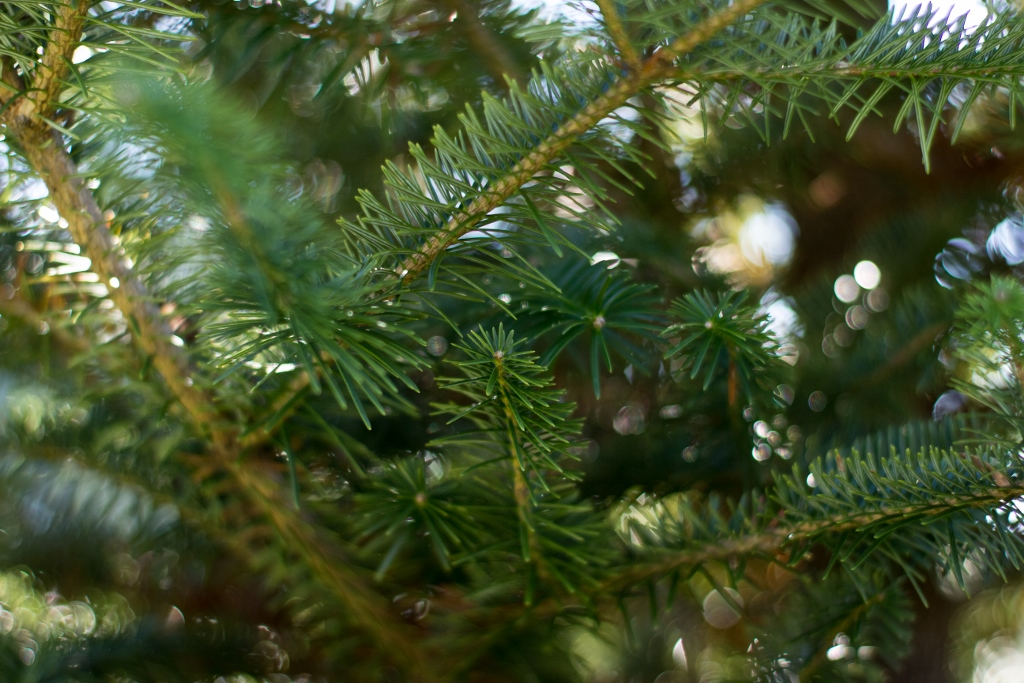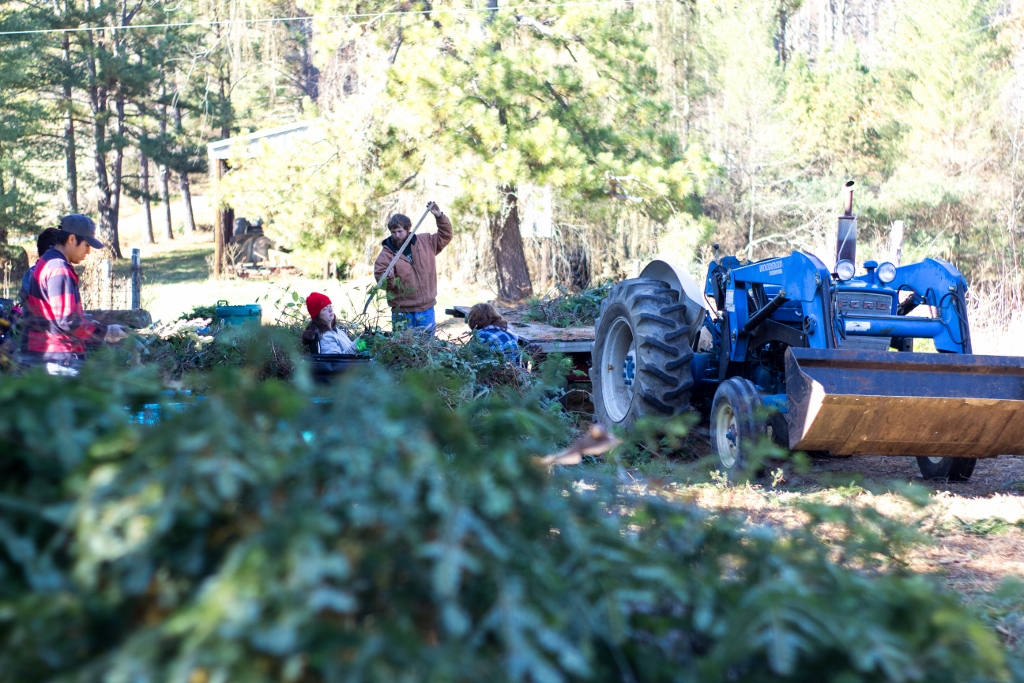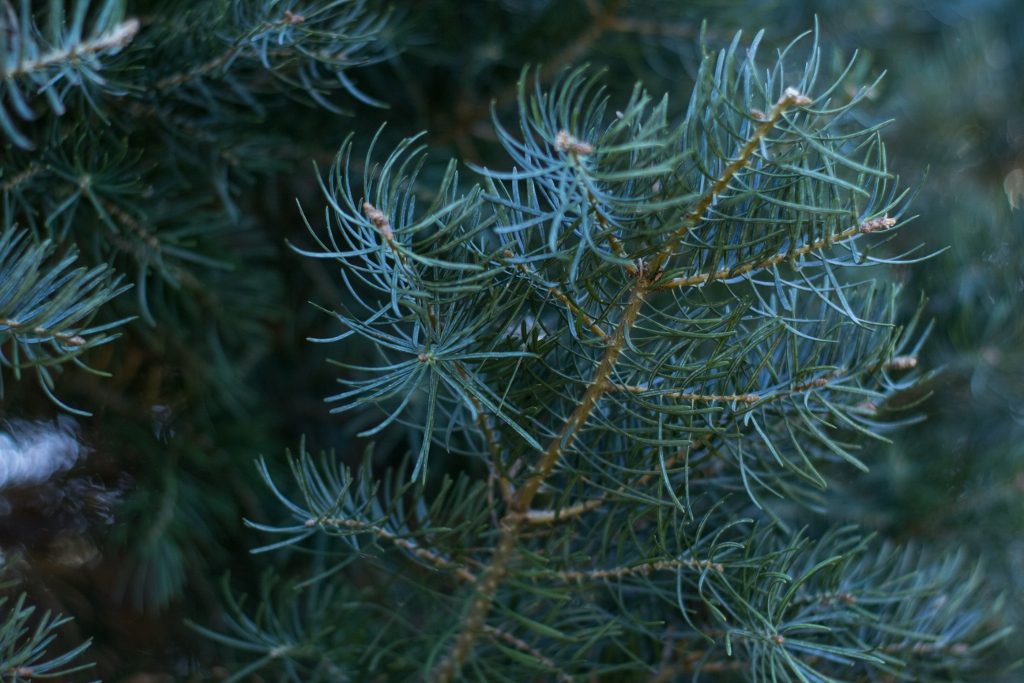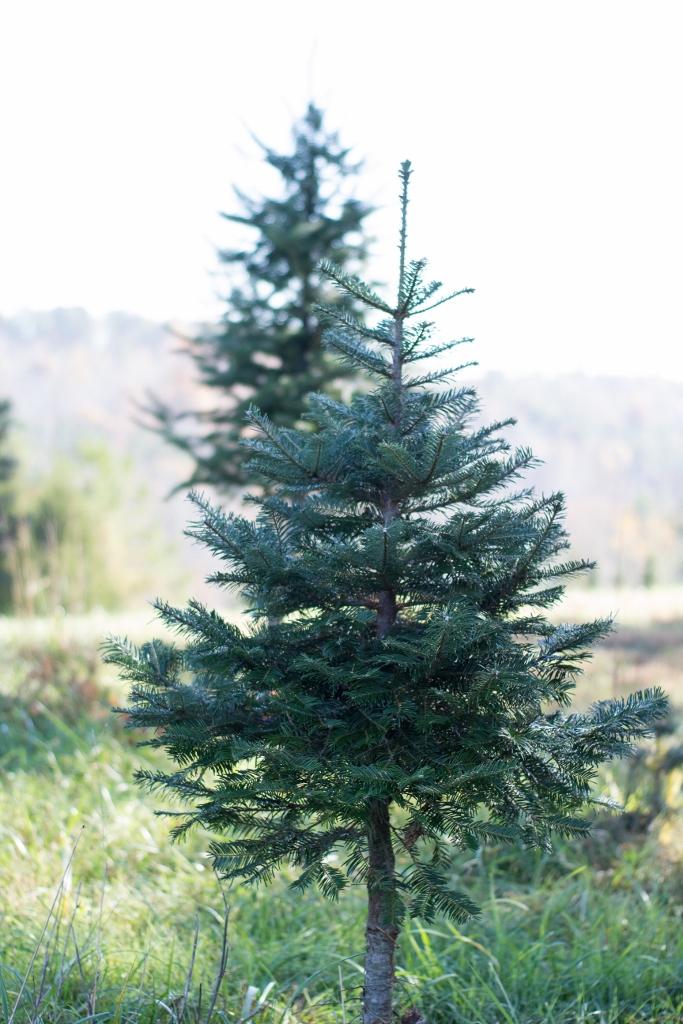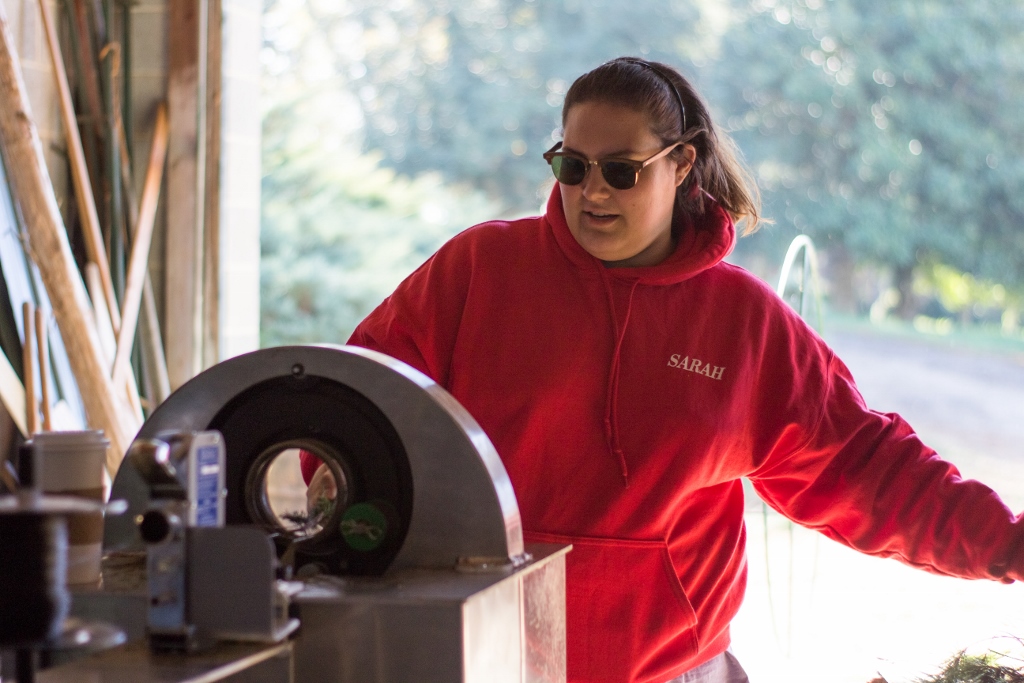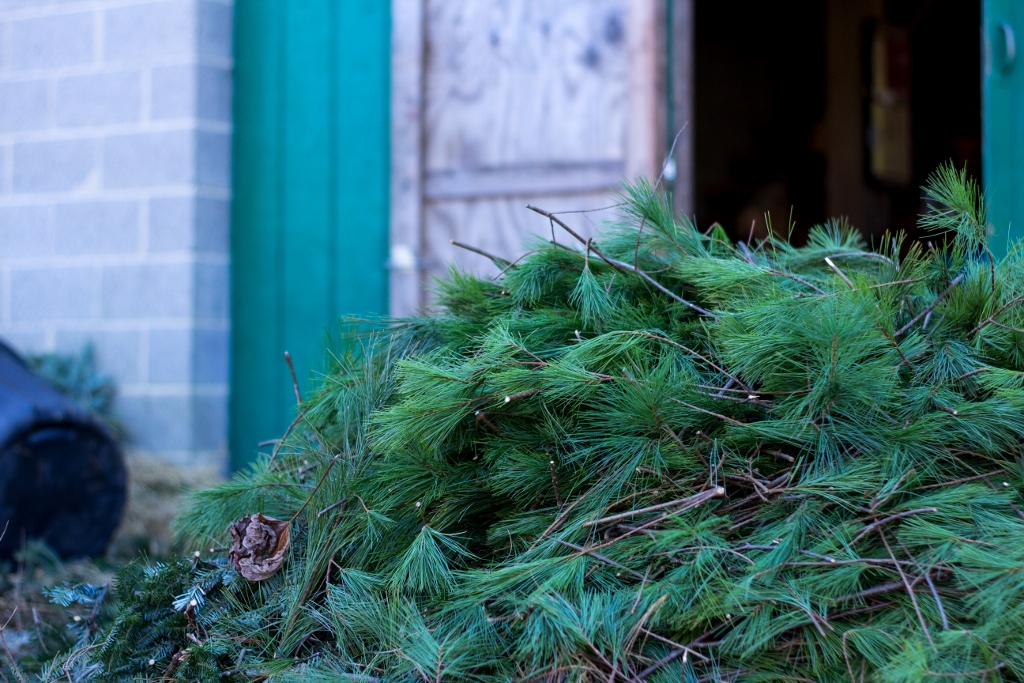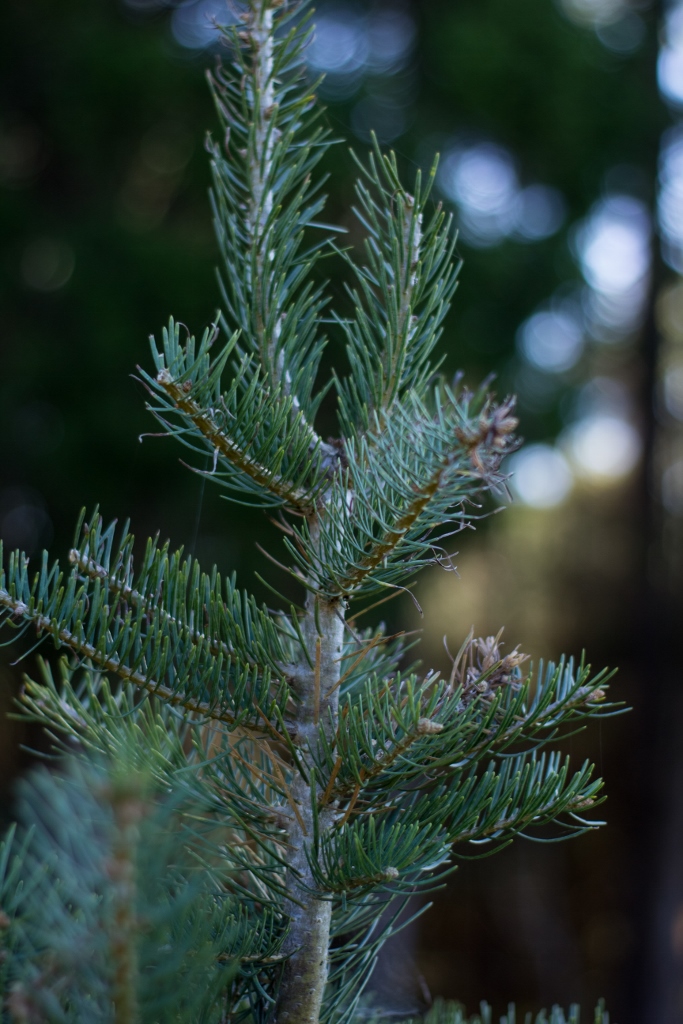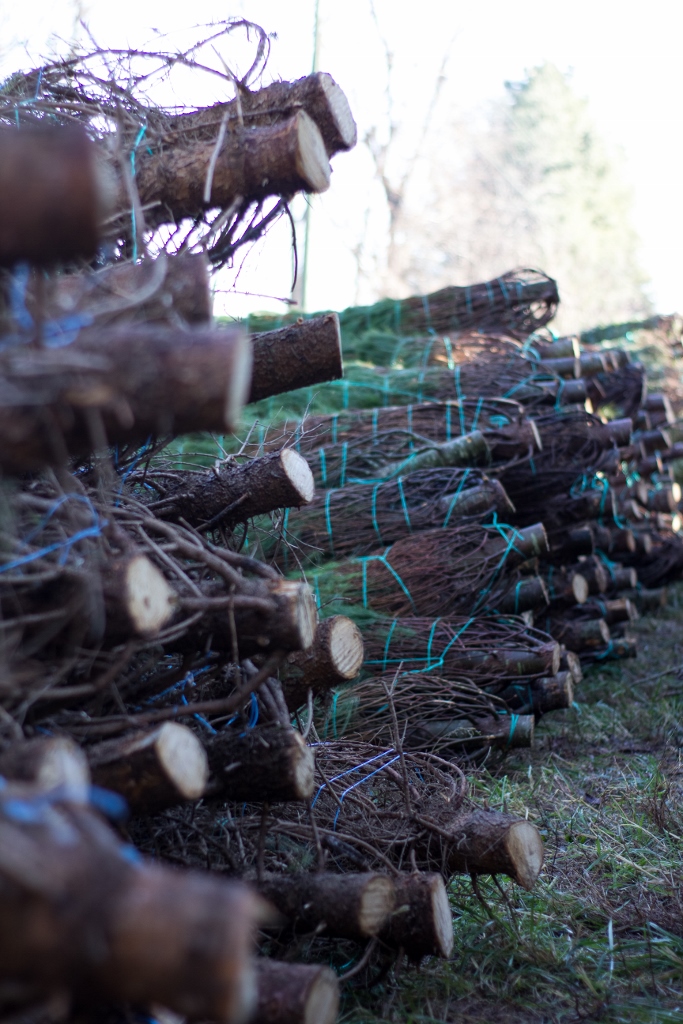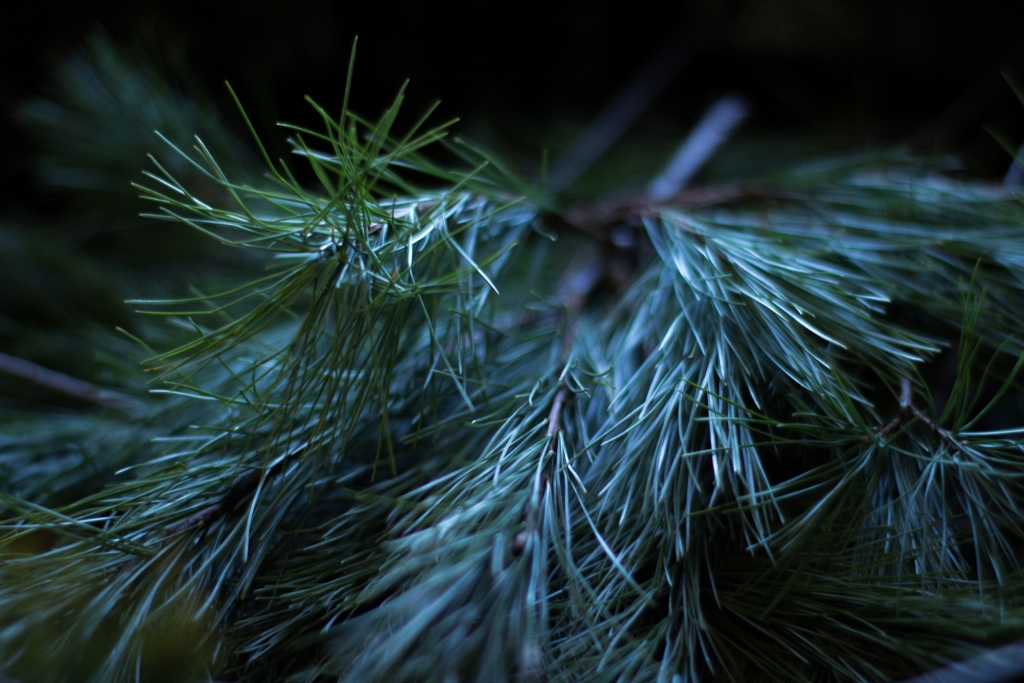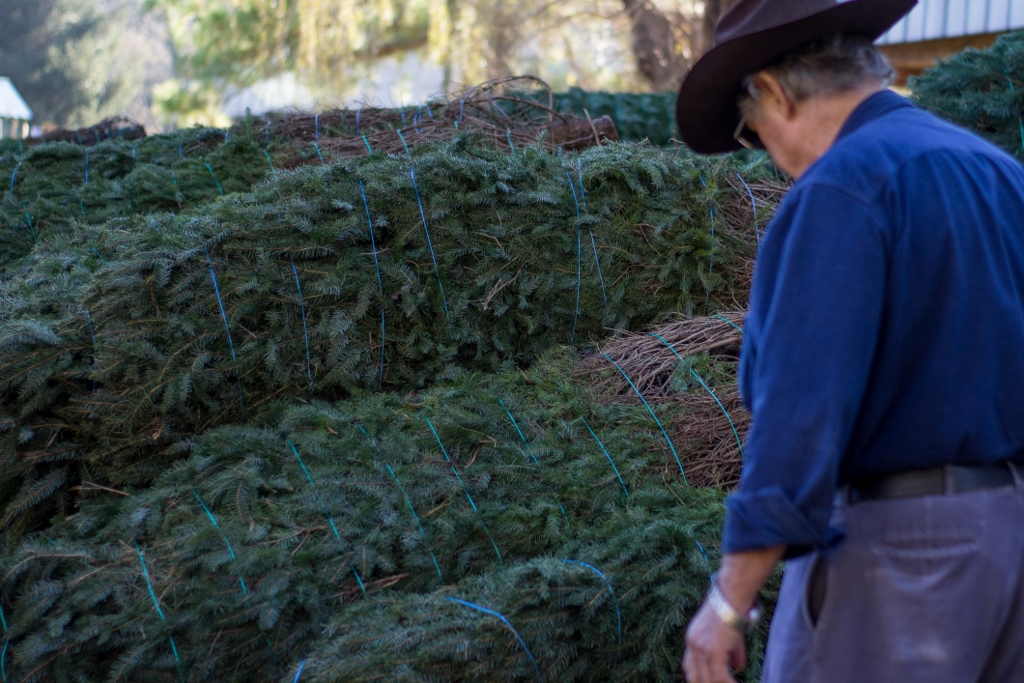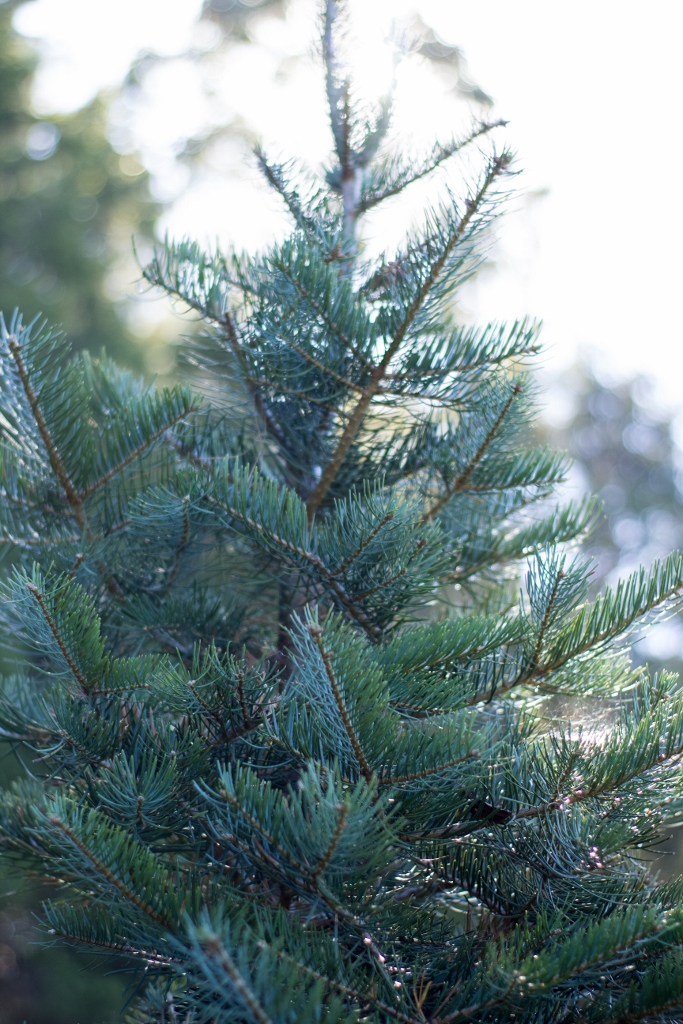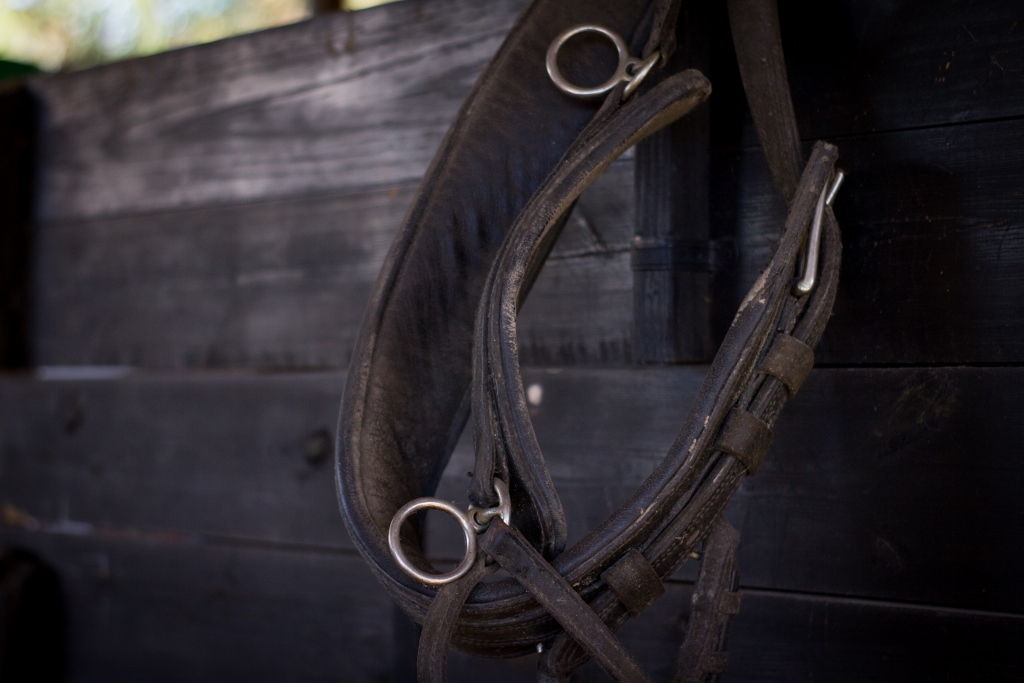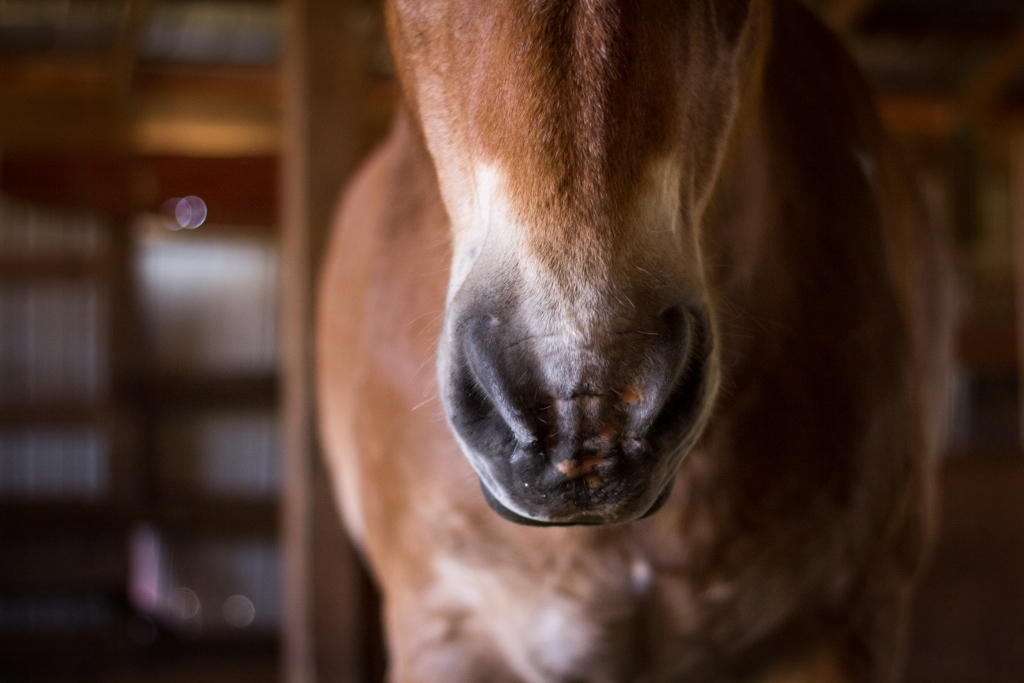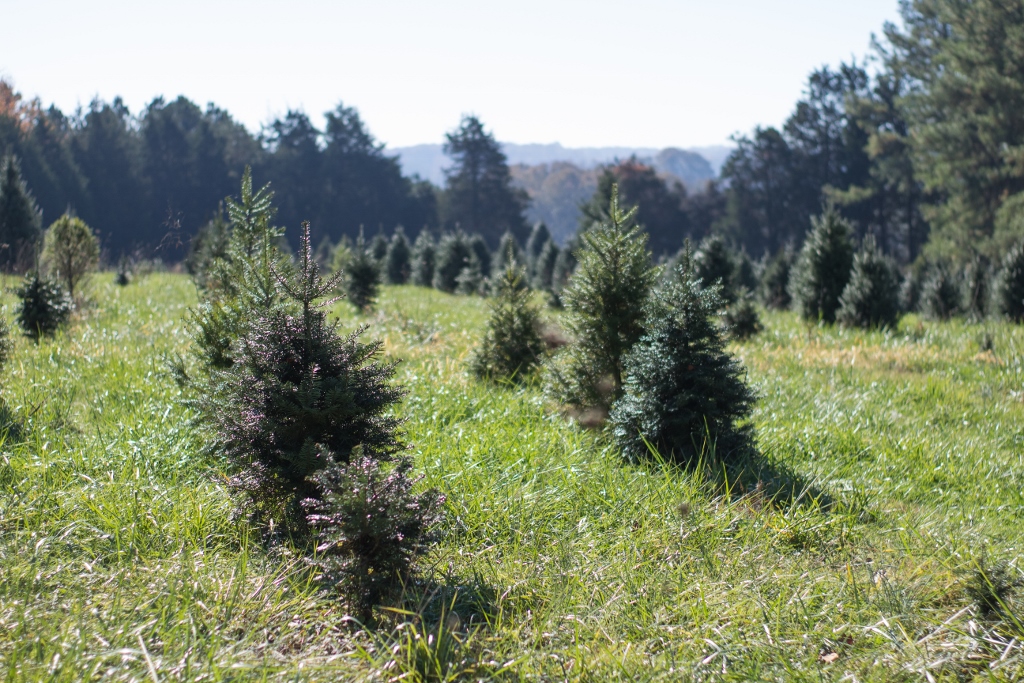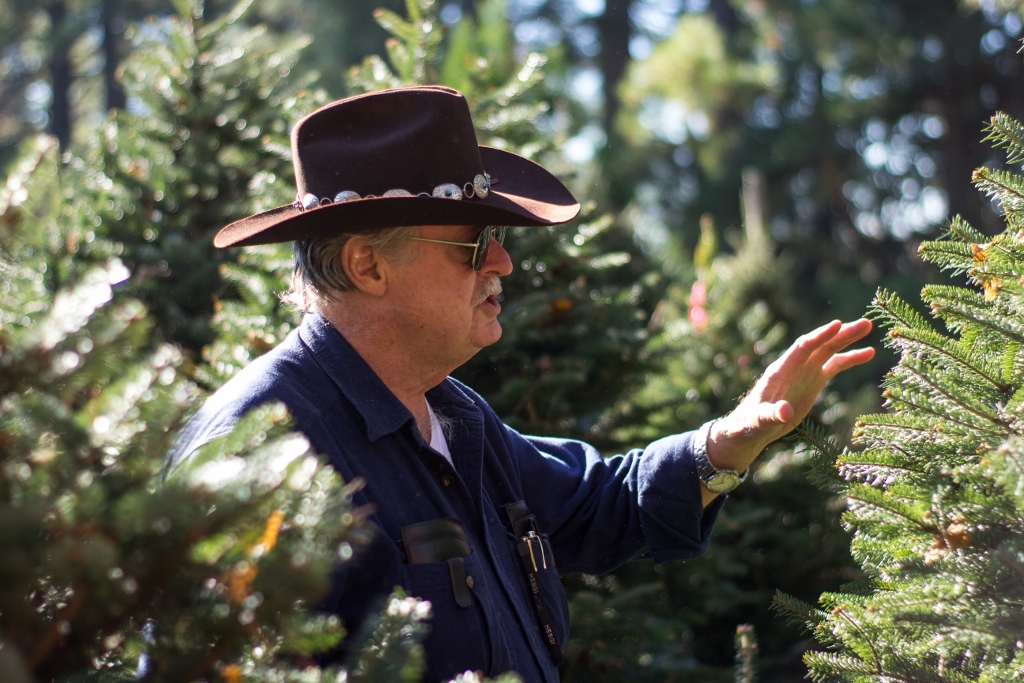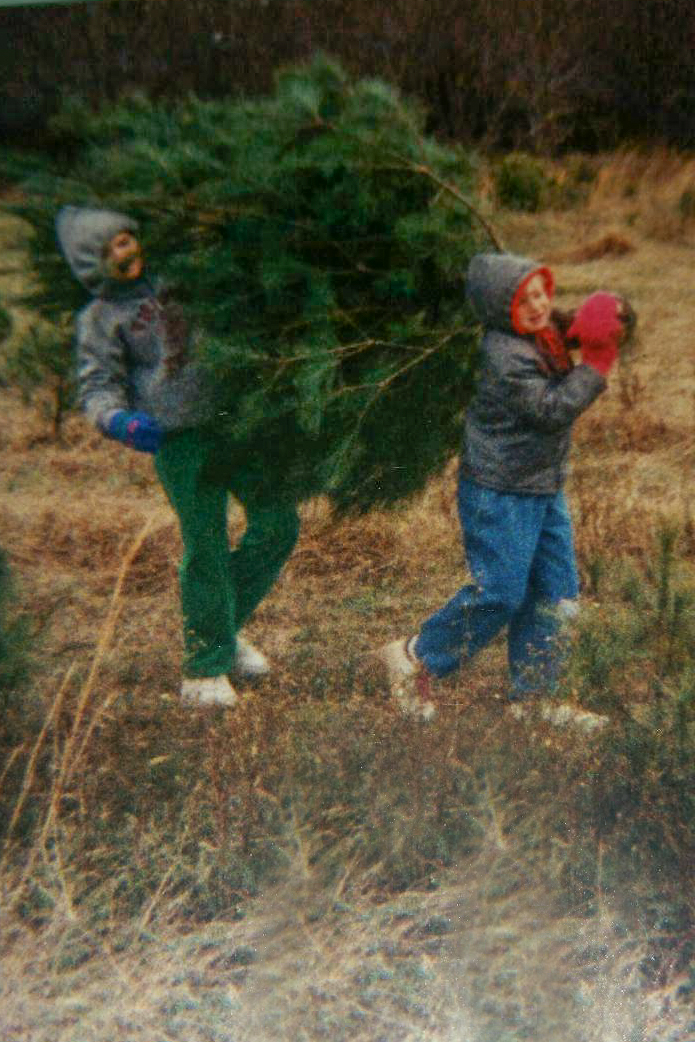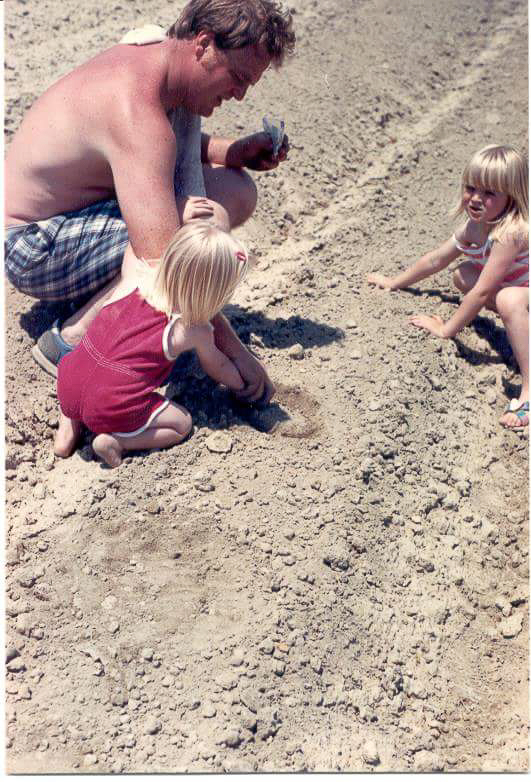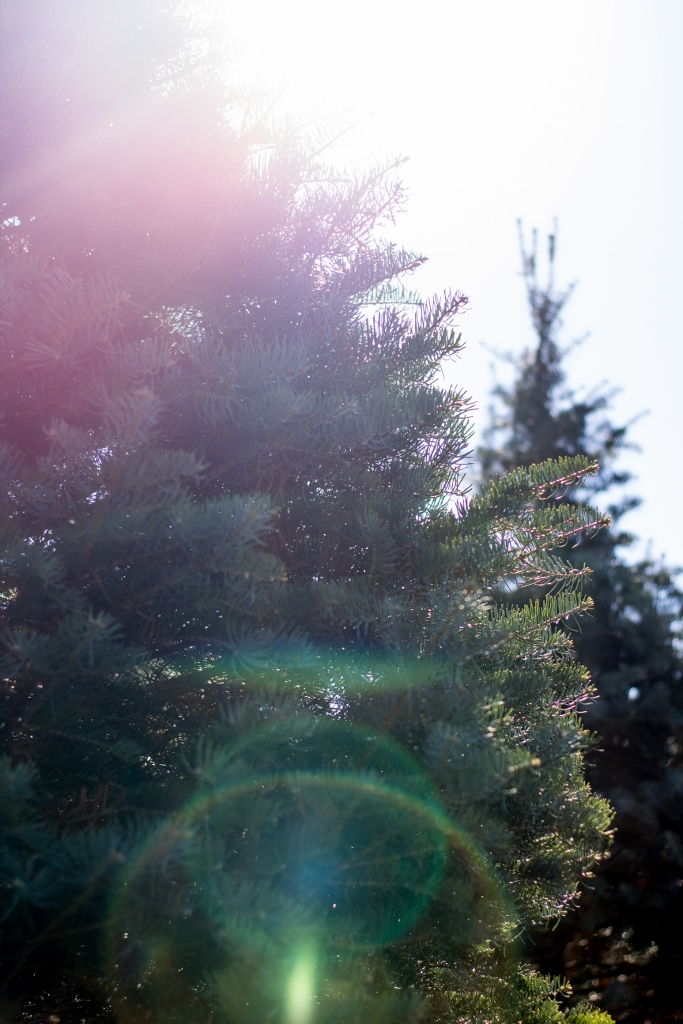If you think diversity on a Christmas tree farm is all about the number of evergreen options sitting in the field for customers in December, think again. J and J Treeland, a family-run operation in Prospect, Virginia, spreads it efforts over enterprises in retail, wholesale, wreath-making, greenery sales, and roping, creating a truly diverse income stream that has evolved to meet changing trends and new demands.
The “J and J” behind the name are John Young and his forester friend Jim Bowen, who started the farm in 1979 and ran it as business partners for twenty years until Jim took a new job with the Department of Forestry and John transitioned to full ownership. “He had the knowledge, I had the land, so we decided we’d pool our resources, and we started out nice and small,” recalls John. “And then greed got the best of us,” he laughs, “So instead of planting a thousand trees, well hell, if that’s good, how about planting three thousand trees, then why not try five thousand…so soon, we had trees in a lot of spots. We were shipping, and mainly we had white pines and Norway spruces and we used to buy Frasier firs out of the mountains, and then I started growing firs and Turkish firs.” Though the farm has downsized from its peak days growing thousands of trees and shipping in wholesale orders to supply retail markets, there was a time when John had trees growing on sites ranging from Sussex to Grundy. “That’s a long stretch,” he adds.
Perhaps the most intriguing element of the farm is its connection to Virginia’s best-loved historical district. “We make all the wreaths for Colonial Williamsburg. Every wreath that you see hanging on those doors in the old part of town is made right here,” John says. Anyone who has visited Duke of Gloucester street in December knows that supplying this order is no small feat. For jobs like this, good help is a necessity. John owns a machine that speeds up the process of attaching greenery to each wreath base, but there is plenty of work to be done by hand, and for that, he employs holiday farm crews. Since many people have difficulty scheduling seasonal work around their year-long jobs, finding labor to go to the field, cut and sort greenery, and assemble wreaths can be challenging. “As long as you can work or you’re willing to work, I’ll give you a job,” John laughs.
Farm employees undergo some training to prepare for the holiday wreath rush, according to Sarah Kirkman, who runs certain retail and wholesale activities and happens to be John’s granddaughter. “October is when we start the wreaths, and the first three weeks of October are just practice—we have people come in, we show them how to clip, how to make wreaths, all that fun stuff. Our first order goes out November third, so that last week of October is making wreaths for real, and then November is mainly all just wreaths and roping,” she says. With wreaths comes a demand for roping, too. In past years, the family had to bring in roping from Southwest Virginia to meet their orders—they simply could not keep up with demand while making everything by hand. With the addition of a new machine, they can now crank out a great deal of roping to accompany the wreaths. The machine rotates the roping wire, adding material as it goes. “It’s fun. It’s fast. I saw a video, and I was like ‘Hey Papa, we need to buy this!’” Sarah laughs.
For the Colonial Williamsburg order, J and J Treeland employees assemble wreaths up to 42” in size. Each wreath gets dipped into a solution which prevents drying out, and the wreaths are stored under a special shade structure which keeps them cool prior to shipping. “At the end of the day, usually about forty minutes before we are done, we go and tie all the wreaths up and get them in there and get them covered in straw and water to keep the temperature down,” Sarah says. The wreaths are decorated by volunteers when they arrive in Colonial Williamsburg. The farm has also sold their wreaths and roping for years at the nearby Williamsburg Farmers Market.
Aside from growing, cutting up, assembling, and shipping greenery, the farm is still in the Christmas tree supply business—John fills orders with a combination of farm-grown and shipped-in trees, especially Frasier firs brought in from the southwestern counties. Many of his customers are small stores or local businesses with pre-cut tree lots. “A lot of the big operators aren’t interested in sending twenty-five or fifty trees to somebody—they deal with big accounts. So I make wreaths and roping for a lot of places and a lot of them are smaller places, and they just need fifty trees,” John says.
Prospect is located in Prince Edward County, just outside of Farmville, and white pines are traditionally some of the easiest Christmas trees to grow in that region. “You can sell a few still. I have a market here if they’re growing in the field—we still sell right many white pines. White pines and Norway spruce we sell a lot of,” John says. Nonetheless, white pine popularity has waned over the years, and John has added about ten other trees to meet new preferences. “We do grow grand fir, concolor fir, Canaan fir, Turkish fur, and we have some Korean fir planted. We have Serbian spruce….we have some blues also,” he notes. “So there’s a lot of trees growing here, and of course most of them are western trees—your Canaan fir comes out of the Canaan Valley in West Virginia and of course Frasier firs are from Carolina, but your grand fir and your concolor fir come out of the western part of the United States. Turkish fir of course, that’s pretty self-explanatory. The Norways and the whites are eastern types of trees from this area.” The Canaan firs are a nice alternative to Frasiers, which do not grow well in Southside Virginia. “You can’t hardly tell the difference,” John says.
Much like wreath-making, tree management requires a high labor commitment, and chores intensify during critical management windows. “In March, we start planting trees. We’re planting about four to five thousand, and we are mostly just doing it on the weekends, some during the week,” Sarah says. “So then in July and August we start topping, and then shape the trees, and in the fall we really mostly mainly just focus on the fields, bushogging and things like that, so we can get it nice and clean for retail since people are walking all through the fields all around Christmastime,” she adds.
As soon as Thanksgiving ends, on-farm, you-cut sales are in full swing. To help families enjoy their tree-picking day on the farm, J and J Treeland offers a suite of amenities. “During the season on the weekends, we have an adult-sized train that runs with three cars, we have the horse-drawn carriage, we have hay rides, we do food, we do cut-your-own, and we have people who can go and cut it down for you if you don’t want to cut it down yourself,” she says. Some customers even use the experience to bring in a photographer for outdoor family Christmas portraits.
When it comes to the live tree versus artificial tree debate, John makes his case with economics—“A really good artificial tree goes for $500—you can buy a real tree for ten years for that,” he says. Sarah notes that it can take one hundred years for an artificial tree to decompose in a landfill, whereas a live tree can be composted.
J and J Treeland is one of just a handful of Christmas tree farms in Southside Virginia—most are concentrated elsewhere in the state, especially the largest wholesale operations. John Young clearly found his niche—several niches, actually—through relationship-building and business savvy, and Prince Edward County Agriculture and Natural Resources Extension Agent Katy Overy believes his efforts have paid off. “They obviously have a broad range. It just shows you that a small farm in a rural county can spread their love everywhere. And of course the Williamsburg arrangement is great,” she says. “And you don’t just walk out there and cut your tree, there are other things that you can do, like get your kids to ride the train. Adding a little bit extra something to intrigue people to come out there is a good thing,” she adds.
Though she is currently the Virginia Cooperative Extension agent serving J and J Treeland and all the other agricultural operations in the county, she has a Christmas tree production backstory of her own, placing her in the unique position to understand firsthand what it takes to run a farm enterprise. “When my sister was born in 1983, my dad decided that he wanted to plant Christmas trees so that my sister and I would have a job to do, to work and make money while we were in middle school and high school, and it’s really what made me have the work ethic I have today,” she says. “Pretty much when I was old enough to walk I was out there helping whenever I could. In the summer when he was pruning, I would walk behind him, helping pick up the trimmings. Then during the summer when we weren’t trimming the trees, we were cutting grass almost every day because of the amount of trees. And when we finished cutting the grass, the other end was ready to cut again,” she adds. Her first Christmas trees were ready to sell when she reached fifth grade, and she and her sister never stopped selling trees until high school. “We never really had a name for our tree farm, we just sold trees to the local grocery store at a discount and we would give two or three different sizes of trees. That’s how we sold them. All we ever planted was white pines,” she says. “If Daddy was home, we would go out and he would bring the power saw out there, but if he wasn’t home, we did the hand saw—my sister was on one side, me on the other, and we drug them out of the fields for the customers.”
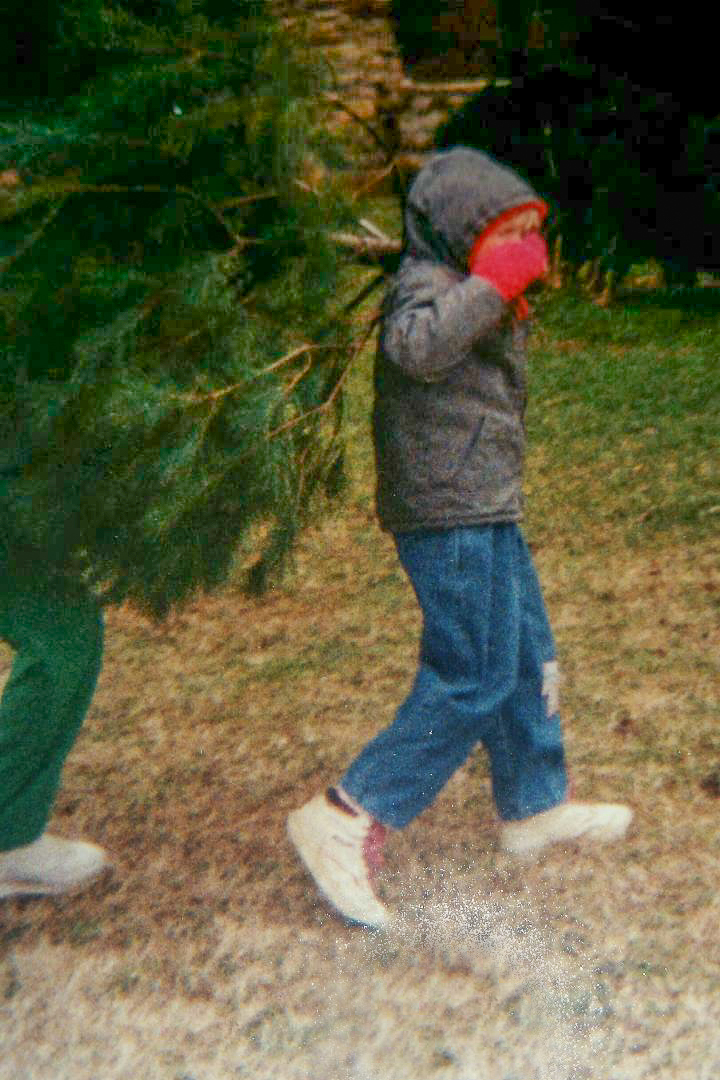
Top, center, bottom: With the help of their father, Extension agent Katy Overby and her sister learned to plant. grow, and harvest Christmas trees on their farm when they were young.
The hours spent growing up on a Christmas tree farm prepared Katy well for her current role, where she consults with farmers and landowners on a daily basis. “It helped me—my dad wasn’t the mouthpiece, we were. He would make us communicate with the customers who came out and wanted Christmas trees, talk to them on the phone….there was no Facebook then or anything like that,” she says. “It helped me with my communication skills period, but as far as being an Extension agent, the way I communicate with producers had a lot to do with how I communicated when I was younger. It made me comfortable around just anybody—we had all walks of life come get Christmas trees from us.”
Through their experiences taking part in this unique industry, Katy, John, and Sarah all agree that there is something special about working with live trees. For John, childhood memories of summers spent working on his uncle’s beef and tobacco farm in Littleton, North Carolina nudged him to move in adulthood from New Jersey to Virginia in 1961 to start farming. Of course, he ultimately settled on Christmas trees and the rest is history. According to Sarah, “Cows, he said, are a pain in the butt. Trees don’t move.” For her, the most rewarding part of the job is being able to take some stress off her grandparents while helping with the details. Unlike her grandfather, though, she cannot recall a particular decision to enter into the tree business. “I was born into it!” she laughs.
Additional Resources for Readers:
J and J Treeland Facebook Page
J and J Treeland on the Virginia Christmas Growers Association website
VDACS Virginia-Grown Christmas Tree Guide

